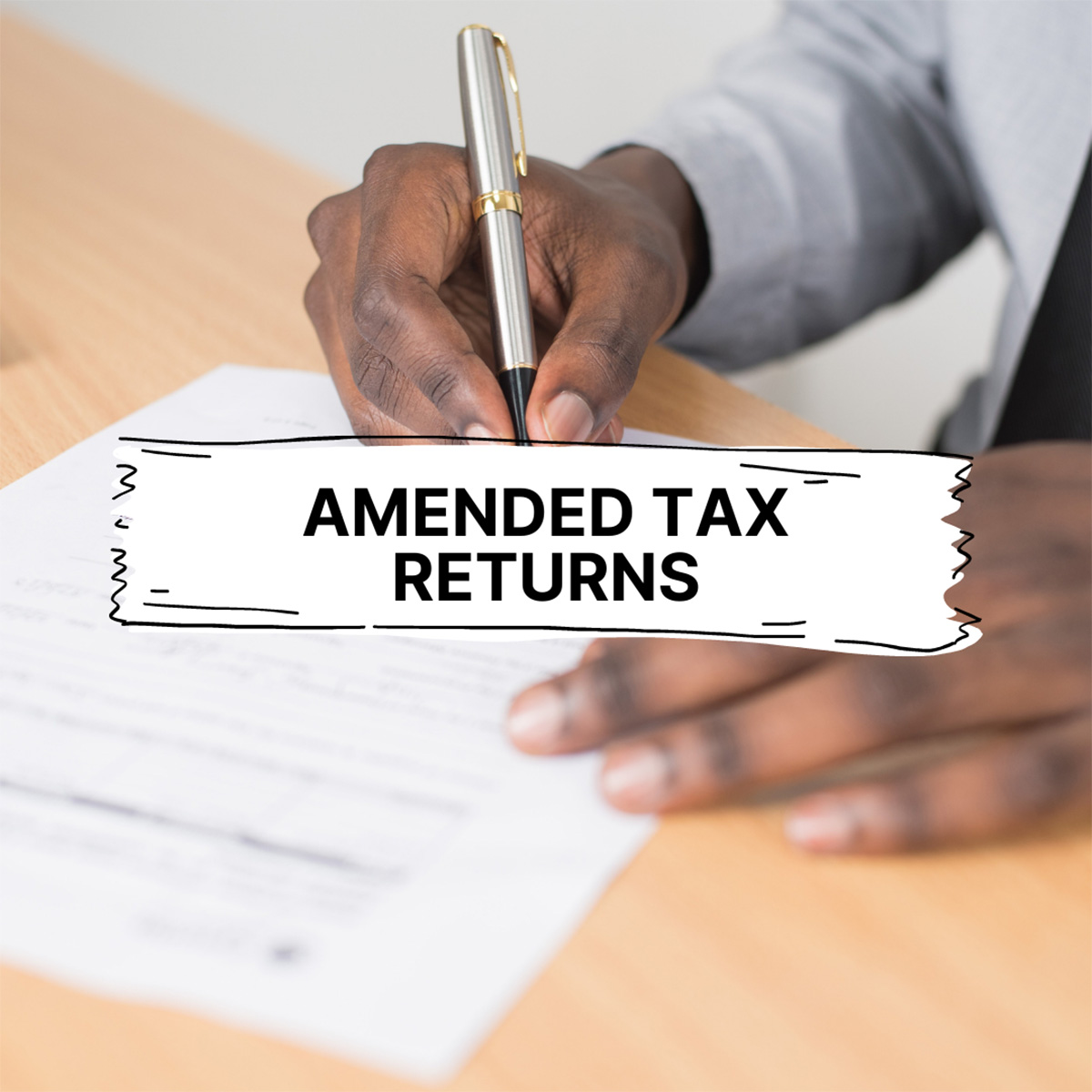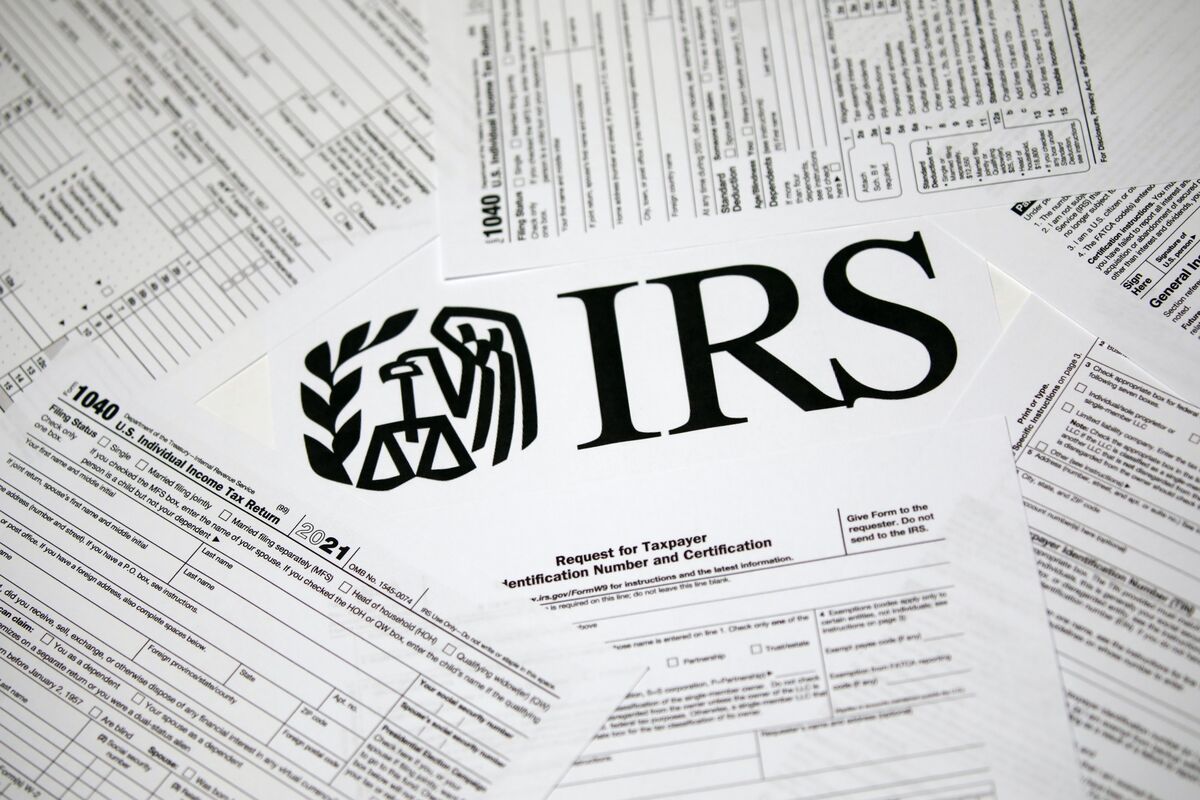

Finance
What Does A Signed Tax Return Look Like?
Modified: February 21, 2024
Learn what a signed tax return looks like and why it is essential for your finances. Gain insights into the importance of a proper tax filing process.
(Many of the links in this article redirect to a specific reviewed product. Your purchase of these products through affiliate links helps to generate commission for LiveWell, at no extra cost. Learn more)
Table of Contents
Introduction
When it comes to filing your taxes, there are several important steps to take to ensure compliance with the law. One crucial requirement is signing your tax return. The signature serves as a confirmation of the accuracy of the information provided and your agreement to be held responsible for its content. In this article, we will explore what a signed tax return looks like and why it is of utmost importance.
Every year, individuals and businesses alike are required to file their tax returns with the relevant tax authorities. Whether you are using a professional tax preparer or completing your taxes yourself, it is essential to understand the significance of signing your tax return.
The act of signing your tax return signifies that you have reviewed the information, and to the best of your knowledge, it is true, accurate, and complete. It is a legal commitment to stand behind the figures reported and to assume responsibility for any errors or omissions. The signature essentially represents your agreement to abide by tax laws and regulations.
Furthermore, the signature also allows the tax authorities to verify the legitimacy of the tax return. By signing, you confirm your identity and that the document is, in fact, the tax return filed by you.
Now that we understand the importance of a signed tax return, let’s delve deeper into the signature requirements and what a signed tax return looks like.
The Importance of a Signed Tax Return
Signing your tax return is not just a formality; it is a critical step that holds significant importance. Here are several key reasons why a signed tax return is crucial:
- Legal Requirement: The Internal Revenue Service (IRS) and other tax authorities require taxpayers to sign their returns. Failure to do so can result in penalties, fines, and possible criminal charges.
- Confirmation of Accuracy: By signing the tax return, you are attesting to the accuracy and completeness of the information provided. It serves as a declaration that you have reviewed the return and believe it to be true and correct to the best of your knowledge.
- Assumption of Responsibility: The signature signifies that you accept responsibility for the information disclosed on the tax return. It means that you are willing to be held accountable for any mistakes, inaccuracies, or misrepresentations.
- Auditing Purposes: The signature helps the tax authorities identify the taxpayer who filed the return. In case of an audit or review, the signature serves as proof of identity and verifies that the return was filed by the individual whose name appears on the form.
- Authorized Representation: If someone else prepares your tax return, they must also sign it as the preparer. This indicates that they have prepared the return to the best of their ability and that they are responsible for any errors or omissions in the filing process.
- Legal Protection: By signing your tax return, you are protecting yourself against potential fraud. It ensures that the return was filed with your consent and knowledge, safeguarding you from unauthorized filings or fraudulent activities.
Remember that signing a tax return is a serious commitment, and it is essential to understand the implications involved. It is always recommended to seek professional advice or consult a tax expert if you have any doubts or questions regarding your tax filing.
Understanding the Signature Requirements
Before we explore what a signed tax return looks like, it is vital to understand the signature requirements set forth by the tax authorities. Here are the key factors to consider:
- Must Be Original: The signature on your tax return must be original and handwritten. Electronic or digital signatures are not acceptable.
- Must Be Your Signature: The signature should be yours and not that of a third party, unless you have a valid power of attorney or are filing on behalf of a deceased taxpayer.
- Date of Signature: The date you sign the tax return should reflect the actual date of signing. It is important not to pre or post-date your signature.
- Spousal Signatures: If you are married and filing jointly, both you and your spouse must sign the tax return. If one spouse is unavailable due to illness or other valid reasons, a power of attorney may be used.
- Business Entity Signatures: In the case of a business entity, such as a partnership or corporation, the tax return should be signed by the authorized individual or representative designated by the entity.
- Consistency with Name: Ensure that the name on the tax return matches your legal name. If you have recently changed your name due to marriage or other reasons, it is crucial to inform the tax authorities to avoid any discrepancies.
It is important to adhere to these signature requirements to ensure the validity and legality of your tax return. Failure to comply with the guidelines may result in your return being considered incomplete or invalid, potentially leading to penalties and delays in processing.
Now that we have a clear understanding of the signature requirements, let’s dive into what a signed tax return actually looks like.
What a Signed Tax Return Looks Like
A signed tax return typically consists of the following elements:
- Signature Line: The tax return form will include a designated space where you can physically sign your name. This line is clearly labeled as the “Signature of Taxpayer(s)” or something similar.
- Date Line: Adjacent to the signature line, you will find a space to enter the date of signing. This line is labeled as “Date” or “Date of Signature.”
- Name Printed: In addition to signing your name, you may also be required to print your name legibly on the tax return. This ensures clarity and provides further confirmation of your identity.
- Filing Status: The tax return form will also indicate your chosen filing status (e.g., single, married filing jointly, etc.). Make sure to select the appropriate status before signing your return.
- Other Required Information: Depending on the tax return form you are using, there may be additional sections or fields that need to be filled out before signing. Verify that all necessary information is accurately provided before proceeding with the signature.
When signing your tax return, it is crucial to follow the instructions precisely. Use a pen with permanent black or blue ink to ensure legibility. Avoid using pencil or colored ink, as they can fade or be easily altered.
Remember that signing your tax return signifies your affirmation of the accuracy of the information provided and your commitment to be held responsible for its content. It is important to take this step seriously and double-check all details before proceeding.
Now that we have covered what a signed tax return looks like, let’s continue by exploring the location of the signature on various tax forms.
The Location of the Signature
The precise location of the signature on a tax return may vary depending on the specific form you are using. However, the general rule is that the signature line will be clearly indicated, usually near the end of the document. Here are a few examples of where you can expect to find the signature line on commonly used tax forms:
- Form 1040: On the standard individual income tax return form, Form 1040, you can find the signature line at the bottom of the second page. The line is labeled as “Sign Here.”
- Form 1120: For corporations filing their income tax return using Form 1120, the signature line is typically located at the bottom of page 1, just above the “Paid Preparer Use Only” section.
- Form 1065: Partnerships filing their tax return on Form 1065 will find the signature line at the bottom of page 5, indicated as “Partner’s Declaration.” Each partner must sign their name and provide the date.
- Form 941: Employers filing their quarterly payroll tax return on Form 941 will find the signature line at the bottom of the second page, labeled as “Sign Here for the Employer.” The authorized individual, such as the business owner or payroll officer, should sign and date the form.
Regardless of the specific form you are using, it is essential to carefully review the instructions provided by the tax authorities. The instructions will specify the exact location of the signature line and provide any additional requirements or considerations.
Remember to sign the tax return only when you have reviewed all the information and are confident in its accuracy. Once signed, the document becomes legally binding, and any changes or corrections will require additional steps to be taken.
Now that we know where to find the signature line, let’s explore the different types of signatures accepted on a tax return.
Types of Signatures Accepted
When it comes to signing a tax return, there are generally two types of signatures that are accepted: handwritten signatures and electronic signatures, depending on the filing method. Let’s explore both types in more detail:
- Handwritten Signatures: Handwritten signatures are the traditional method of signing a tax return. They involve physically signing your name using a pen or similar writing instrument on the designated signature line of the tax form. Handwritten signatures are typically required for paper-filed tax returns.
- Electronic Signatures: With the advancement of technology, many tax authorities now accept electronic signatures for tax returns filed electronically or using specific e-filing platforms. An electronic signature is a digital representation of your handwritten signature. It can be created using various methods, such as typing your name, using a stylus or touchpad, or utilizing digital signature software.
It is important to note that not all tax forms or filing methods allow for electronic signatures. The acceptance of electronic signatures may vary depending on the tax authority and the specific regulations in your jurisdiction. Therefore, it is essential to check the guidelines and instructions provided by the tax authorities to determine the accepted methods for your tax return.
If you are using a tax professional or tax software to prepare and file your taxes, they will guide you through the process of signing your tax return, ensuring that you comply with the appropriate signature requirements.
It is crucial to understand that electronic signatures carry the same legal weight as handwritten signatures, as long as they are created in compliance with the applicable laws and regulations. The objective is to provide a secure and efficient method for taxpayers to sign their returns while maintaining the integrity of the filing process.
Now that we know about the types of signatures accepted, let’s delve into the importance of ensuring proper authorization before signing your tax return.
Ensuring Proper Authorization
Before signing your tax return, it is crucial to ensure that you have proper authorization to do so. This is particularly important if you are signing on behalf of someone else or if you are signing a tax return as a representative of a business entity. Here are some key points to consider:
- Individual Authorization: If you are signing your own tax return, it is assumed that you have the necessary authorization. However, it is essential to verify that all the information on the return is accurate and complete before signing.
- Spousal Authorization: When filing jointly with your spouse, both individuals must sign the tax return. This indicates that both parties have reviewed the return and agree to be jointly responsible for its accuracy and completeness.
- Authorized Representative: If you are signing a tax return on behalf of someone else, you must have the proper authority to do so. This could include having power of attorney or being designated as a legal representative. It is crucial to follow the applicable laws and regulations governing authorized representation.
- Business Entity Authorization: If you are signing a tax return for a business entity, such as a partnership or corporation, you must be an authorized individual or representative of the entity. This may require you to provide documentation and demonstrate your legal authority to sign on behalf of the business.
- Preparer Authorization: If you are a professional tax preparer, signing a tax return as the preparer signifies that you have prepared the return to the best of your knowledge and that it is accurate and complete based on the information provided by the taxpayer. It is important to understand the responsibilities and obligations of the preparer when signing a tax return.
Proper authorization helps ensure that the tax return is being signed by the appropriate individuals or representatives who have the legal authority to do so. It protects against unauthorized filings and demonstrates transparency in the tax filing process.
If you are unsure about whether you have the necessary authorization to sign a tax return or if you have any questions regarding the signing process, it is advisable to consult with a tax professional or seek guidance from the tax authorities.
Now that we understand the importance of proper authorization, let’s explore the potential consequences of failing to sign a tax return.
Consequences of Failing to Sign a Tax Return
Failing to sign your tax return can have serious consequences. It is a requirement set forth by the tax authorities, and failure to comply can result in penalties, delays, and potential legal issues. Here are some of the consequences that can occur:
- Penalties and Fines: Failing to sign your tax return can lead to penalties imposed by the tax authorities. The amount of the penalty can vary depending on the jurisdiction and the specific circumstances, but it can be significant. These penalties are in addition to any other penalties that may apply for late payment or inaccurate information.
- Rejected or Delayed Processing: Tax returns that are not signed may be considered incomplete or invalid. As a result, the tax authorities may reject the return or delay its processing until the signature requirement is fulfilled. This can lead to delays in receiving any potential refunds or processing any necessary adjustments.
- Potential Audits or Reviews: Failing to sign your tax return can potentially raise red flags with the tax authorities. Unsigned returns may be subjected to additional scrutiny or higher chances of being selected for audits or reviews. This increases the likelihood of facing further investigations and potential penalties if any inaccuracies or discrepancies are found.
- Loss of Legal Standing: By not signing your tax return, you may lose your legal standing and protection under the tax laws. The signature serves as a declaration that the return is true, accurate, and complete, and that you are willing to be held responsible for its content. Failure to sign may undermine your position and could have adverse impacts in case of any disputes or legal issues.
- Criminal Charges: In more severe cases, intentionally failing to sign a tax return or engaging in fraudulent activities can lead to criminal charges. This can result in severe penalties, including fines and potential imprisonment, depending on the nature and extent of the offenses committed.
It is essential to understand that signing a tax return is more than just a procedural requirement – it is a legal obligation. By signing, you are confirming your compliance with the tax laws and your willingness to take responsibility for the accuracy of the information provided. It is crucial to properly sign your tax return to avoid any unintended consequences.
In the event that you realize you have forgotten to sign your tax return, it is important to rectify the situation as soon as possible. Let’s explore how to correct a missing signature next.
How to Correct a Missing Signature
If you realize that you have forgotten to sign your tax return, don’t panic. Fortunately, there are ways to correct this error. Here are the steps to follow to rectify a missing signature:
- Review the Return: Double-check your tax return to ensure that all the required information is accurately filled out. Make any necessary changes or corrections before proceeding with the signature.
- Handwritten Signature: If you are filing a paper tax return, simply sign your name in the designated signature line using a pen with black or blue ink. Make sure the signature is legible and matches your printed name, if required.
- Electronic Signature: If you are using an electronic filing method, check the software or platform you are using to see if there is an option to add your signature electronically. Follow the instructions provided to electronically sign the return and ensure it is properly submitted.
- Amended Return: If you have already submitted a tax return without a signature, and you realize the mistake after the filing deadline, you may need to file an amended return. Follow the guidelines provided by the tax authorities to complete and submit the amended return with the correct signature. It’s important to note that there may be specific procedures and deadlines for filing amended returns.
- Power of Attorney: If you are signing on behalf of someone else as their authorized representative, ensure that you have the proper documentation and legal authority to act on their behalf. If necessary, consult with a tax professional or seek guidance from the tax authorities to ensure compliance with relevant regulations.
It is essential to rectify a missing signature promptly to avoid potential penalties, delays, or legal complications. Keep in mind that the specific steps required may vary depending on the tax authorities and the filing method used.
If you have any doubts or encounter difficulties in rectifying a missing signature, it is advisable to seek guidance from a tax professional or consult with the tax authorities. They can provide the necessary assistance and ensure that the correct steps are taken to remedy the situation.
Now that you know how to correct a missing signature, let’s summarize the key points we have covered in this article.
Conclusion
Signing your tax return is a crucial step in the tax filing process. It represents your commitment to the accuracy and completeness of the information provided, as well as your acceptance of responsibility for its content. Failing to sign your tax return can have serious consequences, including penalties, delays, and potential legal issues.
Understanding the signature requirements and knowing what a signed tax return looks like is essential. Whether you are using a handwritten signature or an electronic signature, it is important to follow the guidelines provided by the tax authorities and ensure that you have proper authorization if signing on behalf of someone else or a business entity.
If you realize that you have forgotten to sign your tax return, take immediate action to correct the error. Review the return, add the necessary signature, and submit it as soon as possible. If the filing deadline has passed, you may need to file an amended return to include the missing signature.
Remember, signing your tax return is not just a formality. It holds legal weight and signifies your commitment to comply with the tax laws and regulations. Take this step seriously and seek professional advice if you have any questions or concerns.
By understanding and adhering to the signature requirements, you can ensure a smooth and compliant tax filing process and minimize the potential risks and consequences that come with a missing or incorrect signature.
So, the next time you prepare to file your taxes, remember the importance of signing your tax return and do so with confidence and responsibility.














